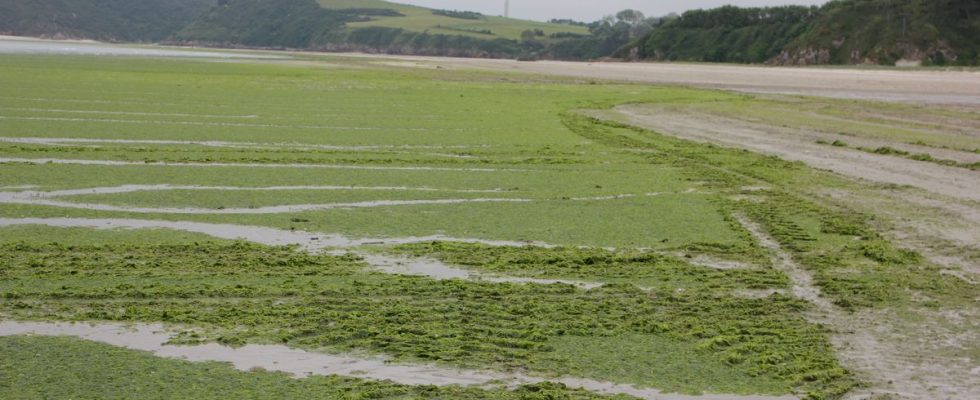The film will undoubtedly harm the image of the region. Scheduled for July 12, the release of the feature film “Green Algae” in many French cinemas will bring back bad memories to tourism professionals in Brittany. There was a time when the images of green beaches broadcast on national television news had done a lot of damage to the sector, which generates 8% of regional GDP. At the dawn of a new summer season, local officials are therefore trying to reassure visitors by promising them clean beaches. We recognize from the outset that pollution is in sharp decline in most of the eight bays monitored. The result, no doubt, of the efforts of agriculture to limit inputs, but also of a conjuncture of meteorological elements. But all is not perfect, far from it.
The last aerial flight carried out by the Center for the Study and Valorization of Algae (CEVA) shows Brittany with two faces. “We pick up much less than in other years,” says the prefect of Côtes-d’Armor. In the bays of La Fresnaye and Saint-Michel-en-Grève, the beaches are largely “preserved”, according to Stéphane Rouvé. On these sites, the development of “ulvaria obscura” is closely scrutinized. This seaweed which turns brown when it runs aground seems to “take the place” of its cousin the Ulva armoricana known as “green seaweed”. But it grows slower. Brittany’s major “problem” lies a little further east.
An amphibious boat tests the pickup at sea
Like last year, the vast majority of strandings take place in the bay of Saint-Brieuc. “Especially in its eastern part, around Hillion and Yffiniac”, recognizes the prefect. This is where the hydrogen sulfide alarms have recently gone off. In a letter disclosed at the end of last week, the mayor of Hillion had denounced the “abandonment” of the state. “The difficulty this year is that the northeast winds have pushed the algae into certain sectors”, assures Etienne Guillet, sub-prefect and “mister green algae” of the region. Impossible for the moment to know what the summer will look like. But if the rains remain so limited, the proliferation should be avoided.
On the most affected beaches, tractors continue to collect. But on the rocks or on the mudflats like in Lorient, the miracle solution has not yet been found. Since autumn, an amphibious boat has been deployed to pick up the ulvas at sea, before they spill onto the coast. “It comes in addition to other solutions to capture algae upstream”, assures the prefect of Côtes-d’Armor. The “Sea Cleaner” experiment conducted with the company Efinor should last three years.

